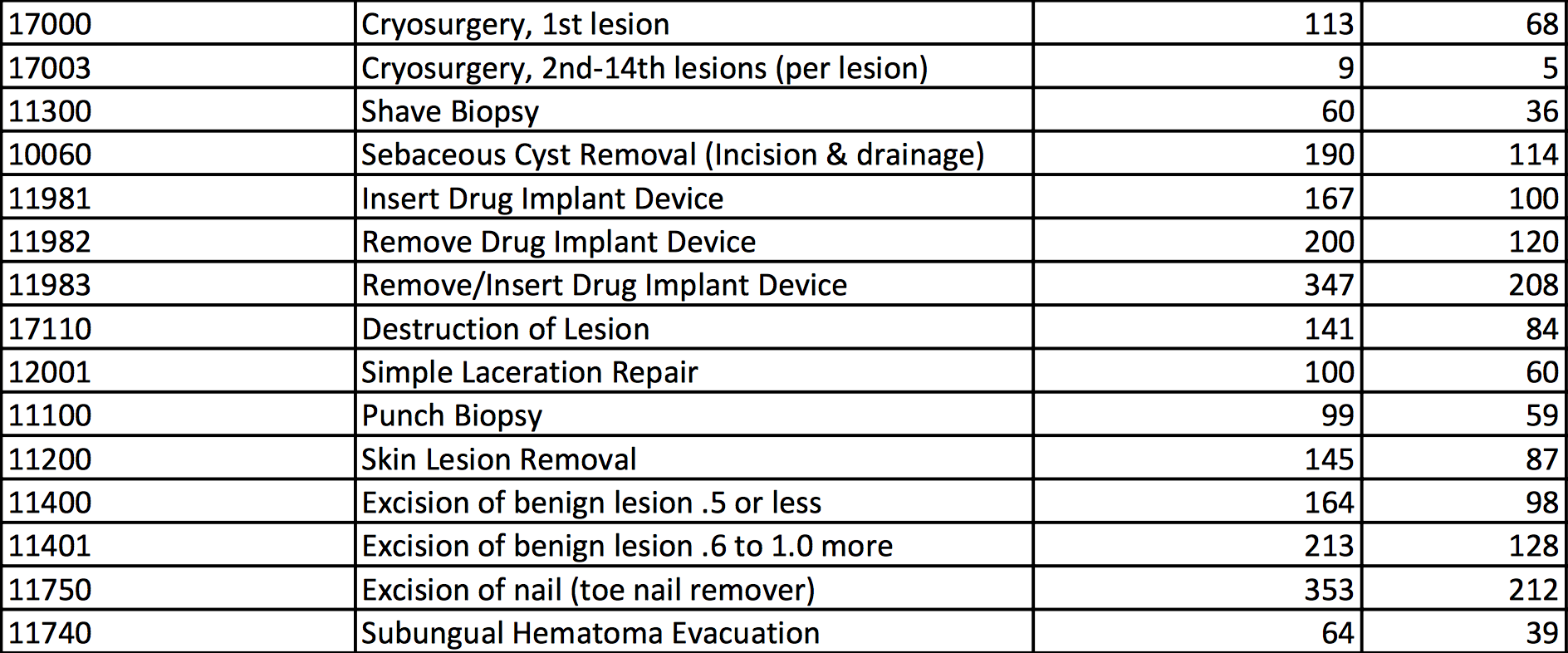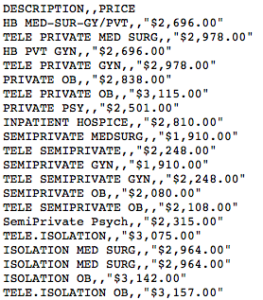
As of Jan. 1, 2019, all hospitals in the U.S. are now legally required to publish the cost of their procedures and items online for public access. This new law is both a more specific and more enforced version of a policy originally included in the Affordable Care Act.
This list, often released in what is referred to as a chargemaster, will list everything offered at the hospital – from heart surgery to a tablet of ibuprofen.
“How many of us have received a healthcare service only to find out later we could have received it someplace else for less?” Center for Medicare and Medicaid Services Administrator Seema Verma said. “The lack of price transparency has resulted in a system that denies a patient the ability to make value-based health decisions centered on out-of-pocket costs.”
THE LIST
Although this new requirement has been hailed as a great step forward in healthcare cost transparency, it hasn’t come without flaws.
The first problem consumers have is when they first open a chargemaster and try to find the procedure they need, they are greeted with a string of letters and numbers that wouldn’t otherwise help them calculate the cost of an emergency room visit for a broken arm.
However, this format is something the CMS hopes to be of benefit in the future.
“By requiring the information to be posted in a machine-readable format, we set the stage for private third parties to develop tools and resources that are more meaningful and actionable than a list of codes and prices,” Verma said.
When looking at the Grady list online, for someone expecting a baby and looking for the cost, a page search for the words baby, labor or birth won’t yield any results. However, when searching the word labor, you will find what you are looking for under “VAGINAL DELIVERY” – at a cost of $5,316. The key here is the consumer needs to know exactly what terms to search to find what they are looking for.
As another example is the item “HB MED-SUR-GY/PVT.” Without prior medical knowledge or having worked in the field, there’s no way to identify what this service actually is.
And after spending three hours trying to find the appropriate source at Grady to decipher this lineitem, it became apparent that working in the field isn’t a guarantee to understanding the list either.
Ultimately, after approximately 20 transfers and nearly an entire Friday afternoon, there was no one who could answer this question before the close of business at 5:00 p.m.
Although now accessible to the public through the internet, the information a consumer might be looking for isn’t so accessible.
The CMS is aware of these concerns but hopes hospitals take patient concerns seriously when it comes to price transparency.
“So let me be clear, hospitals don’t have to wait for us to go further in helping their patients understand what care will cost,” Verma said. “We’ve seen great examples of the tools that go beyond what is required.”
Referring to the list for a few local Atlanta hospitals can help clarify the trouble interpreting it and identifying the cost of what someone needs.
Grady also has a published chargemaster online, as seen below.

TRANSPARENCY IN THE STUDENT HEALTH CLINIC
With all of this information in mind, the next question arose: How does this rule apply to the Student Health Center at Georgia State, or any other type of care provider for that matter?
To get the answer, the question needed to be posed to the CMS directly. The answer was simple: This rule strictly applies to only hospitals, as defined by the CMS.
“The hospital chargemaster requirements do not apply to health clinics. This requirement only applies to hospitals and not to stand-alone health clinics that are not part of a hospital,” Raymond Thorne, from the office of communications at CMS said.
The Student Health Clinic isn’t required to publish this information online and it isn’t available to students.
When reaching out to the clinic to request this list of service costs, The Signal was told that this information couldn’t be provided.
“There’s too many. We do a lot here,” an unknown source in the clinic manager’s office said over the phone.
When asked at the beginning of the call, the source would not give her name. When asked again, she hung up.
She said that if a student wants a procedure or service done, they do have the right to know that cost upfront and can ask when they come in.
Although The Signal couldn’t get ahold of a list with the cost of all services provided as students, we were able to get it as members of the press through an open records request.
Otherwise unavailable, the Student Health Clinic service cost list is now available here.
PROBLEMS AND SOLUTIONS FROM AN EXPERT
Bill Custer from the Center for Health Services Research at Georgia State helped to identify some of the bigger problems with the medical system as a whole — and how this list only highlights his concerns.
“This is the list that hospitals begin their negotiations with insurance providers from, this is not the price that anybody pays,” Custer said.
He likened it to the manufacturers suggested price for an car; but much more distant from the actual cost people will pay.
He even said it’s not possible to use it to compare two hospitals.
“[This is] because different hospitals for different insurers will take different percentages off of this price,” he said. “For a consumer this becomes very difficult to use to try to say hospital A is more expensive than hospital B.”
The next issue is that when someone goes to the hospital for any procedure, they consume a set of these services based on the medical case and severity which will differ from person to person.
“There’s no list item specifically for an appendectomy but there is a list price for a set of services that may or may not be used for an appendectomy,” Custer said. “Basically these lists are not useful for patients or for consumers.”
He added that it may be useful for employers, insurers and other sophisticated buyers with a lot of data. In order to make it applicable to the consumer, he suggests a move toward the system that Medicare uses.
The U.S. medical system, including in Atlanta, is moving toward a system of paying for an “encounter” which would be a set price for a stay at the hospital based on the diagnosis and severity, according to Custer.
When applied to health clinics, like the one on campus, Custer says this list can actually be more useful than in hospitals.
For example, if you go for a stomach ache that’s a pretty standard set of services used.
“It gets easier for clinics because each office visit is still a set of services, but a smaller set,” he said.
THE POLICY
In 2010, the Patient Protection and Affordable Care Act, also known as Obamacare, amended the Public Health Service Act, which consolidated all health services in 1944.
Section 2718(e) of the ACA states, ‘‘Each hospital operating within the United States shall for each year establish (and update) and make public … a list of the hospital’s standard charges for items and services provided by the hospital, including for diagnosis-related groups…”
Known as the CMS final rule, this 2018 addition takes the previous legislation and adds specification for how these price lists should be presented to the public.
Section X, beginning on page 41,686 states, “… effective January 1, 2019, we announced the update to our guidelines to require hospitals to make available a list of their current standard charges via the internet …”
